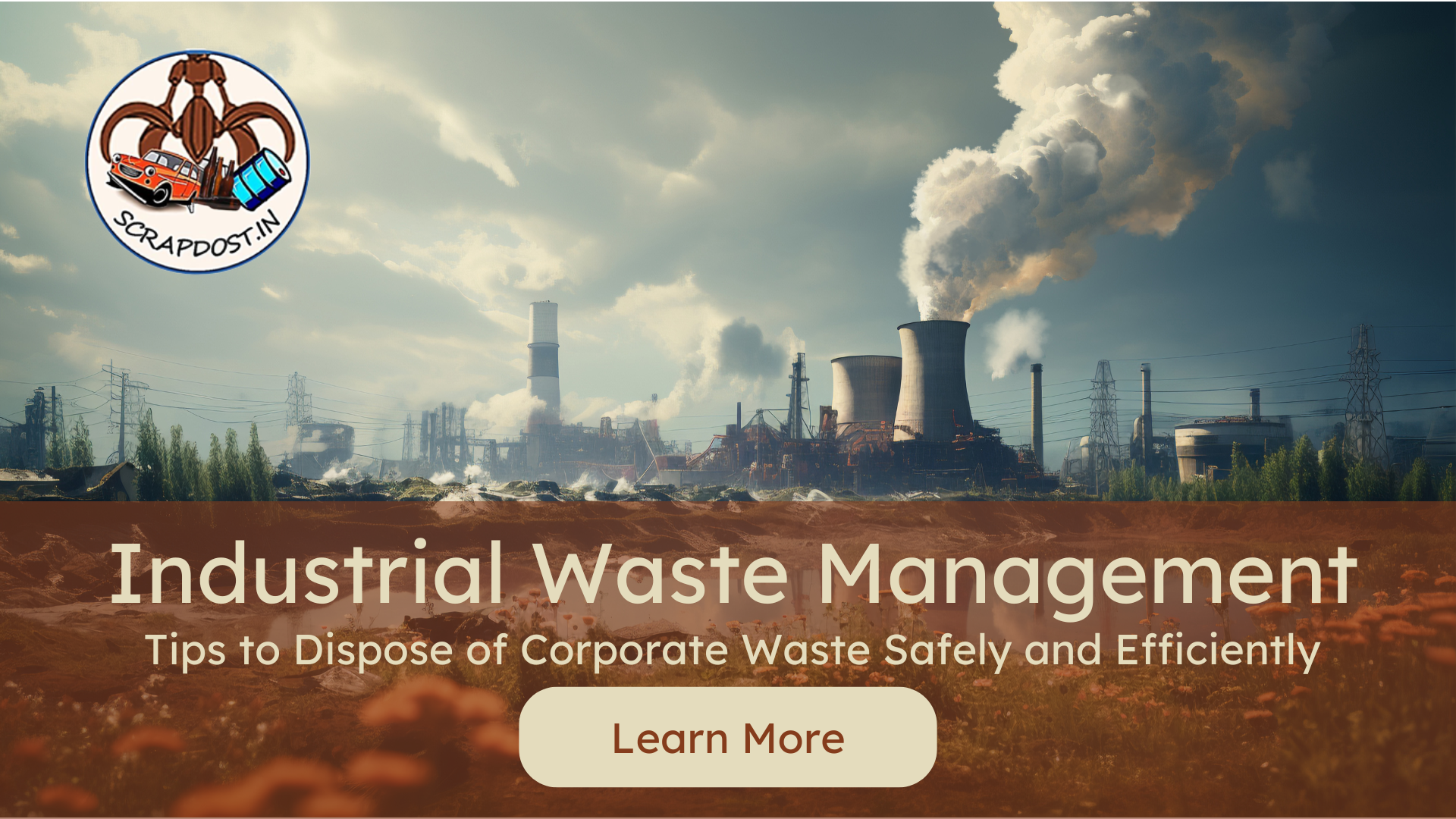Managing waste within industrial settings is a major concern for firms and the relevant environmental agencies. Despite the large amount of waste produced by industries, proper management and disposal procedures are still more important than ever. Waste disposal goes hand in hand with environmental laws and can greatly reduce the impact on the environment and people’s health. This guide will encompass all the types of industrial waste and, how they should be disposed of, and the regulations to be adhered to.
Industrial waste refers to any material produced as an outcome of industrial activity, whether in the manufacturing sector, power generation, construction, or any other related field. It can be categorized into several types:

These commonly include packing materials, scrap metals, and other non-hazardous industrial wastes. Proper management of solid waste can be achieved through segregation and recycling.
The risk from hazardous waste’s dangerous level of toxicity, level of acidity or alkalinity, flammability, and/or if it is capable of undergoing a chemical change. They include chemical solvents, batteries, and specified industrial sludge. Hazardous waste management has certain protocols that must be adhered to the letter when dealing with it.
Such waste includes wastewater, oil, and chemical effluents. Discharge and management of liquid waste are other sensitive areas that have to be approached in order to minimize the impact on water resources.
This category consists of gasses released by industries like carbon dioxide, methane, and other gasses. It is necessary to prevent air pollution by putting into practice emission control measures.
To manage industrial waste effectively, businesses must adopt best practices that prioritize safety, efficiency, and environmental responsibility. Here are key steps to consider:
Source control is the first step in the waste management hierarchy and involves separating waste at its source. Hazardous and non hazardous wastes must also be categorized. For waste management, ensure that you have containers with labels for the specific wastes so that cross-contamination does not occur.
Implement waste reduction measures to minimize waste. This can range from improving production efficiencies, applying enhanced resource utilization efficiencies and performing some scrap renaissance. Create a system for reusing items like metals, plastics, and paper to significantly reduce waste being dumped in the garbage can.
Make sure that waste is properly contained in a way that eliminates chances of leakages, spillage, and other incidents. Store hazardous wastes in proper containers that conform to the regulations and ensure they are stored in well-ventilated areas, together with secondary containment systems. Educate employees about correct handling practices and the usage of various protective equipment, such as gloves, goggles etc.
Different types of waste require specific treatment and disposal methods. Here are some common approaches:
Non hazardous waste can be disposed of in sanitary landfills where waste is dumped in a way that prevents pollution of the soil or water table. It may also be landfilled in another hazardous waste landfill that has been developed to suit hazardous waste disposal.
Incineration is burning waste and taking place at high temperatures to minimize wastage and eliminate those that are poisonous. This method is appropriate for some hazardous wastes, but there should be proper measures taken to monitor emissions.
Hazardous wastes from industries, for instance, metals, plastics, solvents, and so many more, have potential for recycling or recovery. Connect with recycling facilities and investigate how useful materials can be reclaimed from the generated waste.
The control and management of liquid waste before disposal into water bodies are paramount to avoiding pollution. Apply techniques that eliminate pollutants through physical, chemical, and biological procedures in order to meet water quality specifications.
It is important to follow the laws set down at the local, state, and federal levels when managing industrial waste. Different laws apply at different times and in different jurisdictions, depending on the type of waste being transported. Secure permits for storage, transport, and disposal of wastes, and observe documentation on waste management processes.
Hire several consultants to conduct a feasibility study and come up with proper guidelines for waste segregation, storage, treatment, and disposal. Provide responsibilities to trained staff and regularly assess the plan to guarantee its implementation. Incorporate new technologies and process improvement practices into the plan while implementing it.
Inform employees on proper waste management and ensure that they receive training on the appropriate handling, storage, and disposal methods. Support sustainability within the organization by offering incentives for waste minimization and recycling among the company’s employees.
Continuously assess the management of waste to determine the potential for enhancement. Set up metrics such as the amount of waste produced, the recycling rate, and the degree of compliance with the law. Submit relevant waste management information to the respective authorities as and when needed, and utilize such information to foster change.
Ensure that you work with accredited waste management firms that deal with industrial wastes in particular. These specialists can offer you advice, materials, and services that will enable you to deal with waste in a safe and effective manner. They can also help with compliance audits and advise on guidelines for your specific sector.
Industrial waste management is critical to preserving the environment, meeting the required standards, and maintaining conducive business operations. From sorting, recycling, storage, treatment, and disposal of industrial waste, much can be achieved towards environmental conservation and the provision of a healthier earth. The implementation of waste management therefore requires constant monitoring, training of employees, and consultation of waste management professionals. Through proper management of waste, industries can protect the nation’s natural resources, human health, and the image of their companies as environmentally friendly.
© 2026 ScrapDost